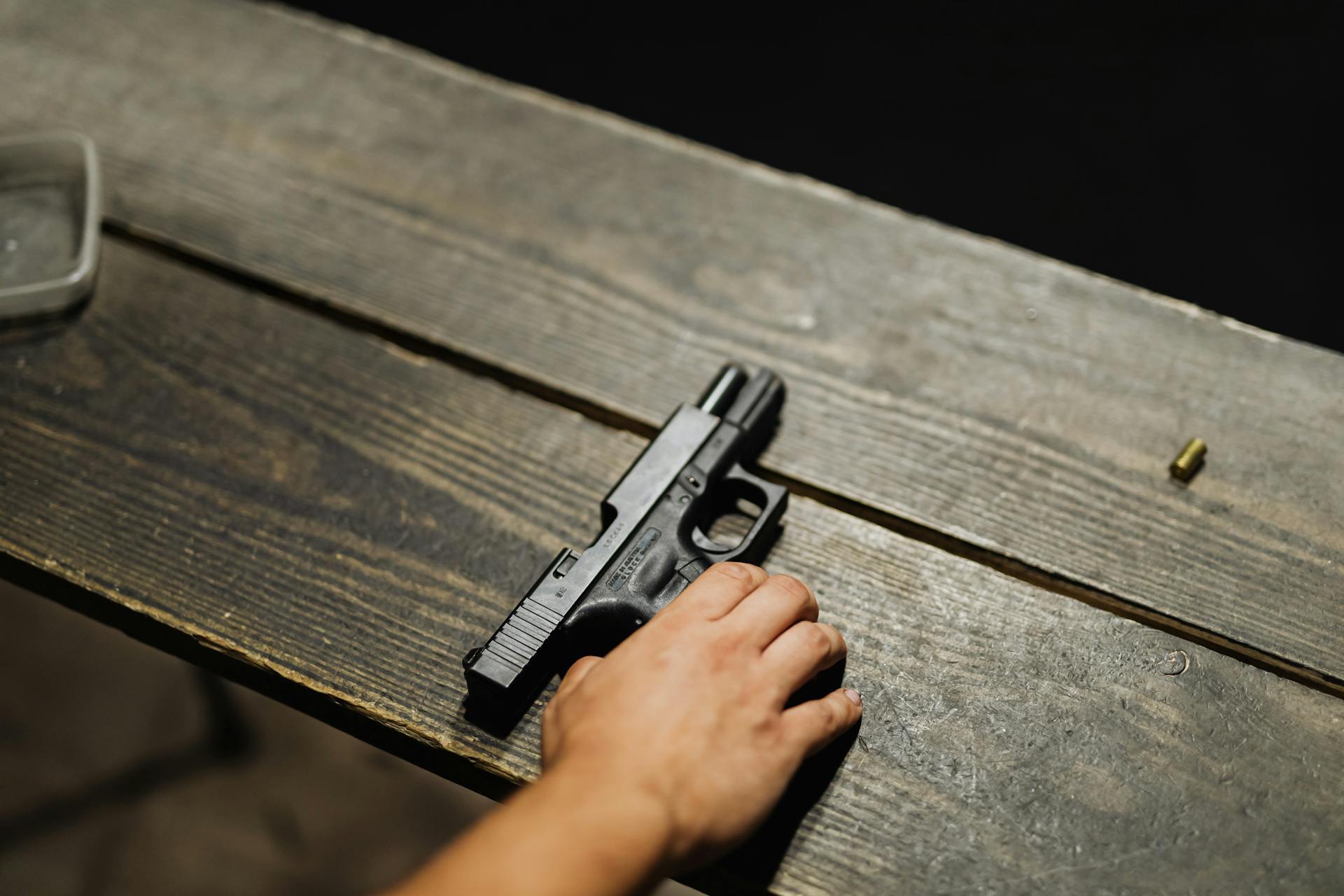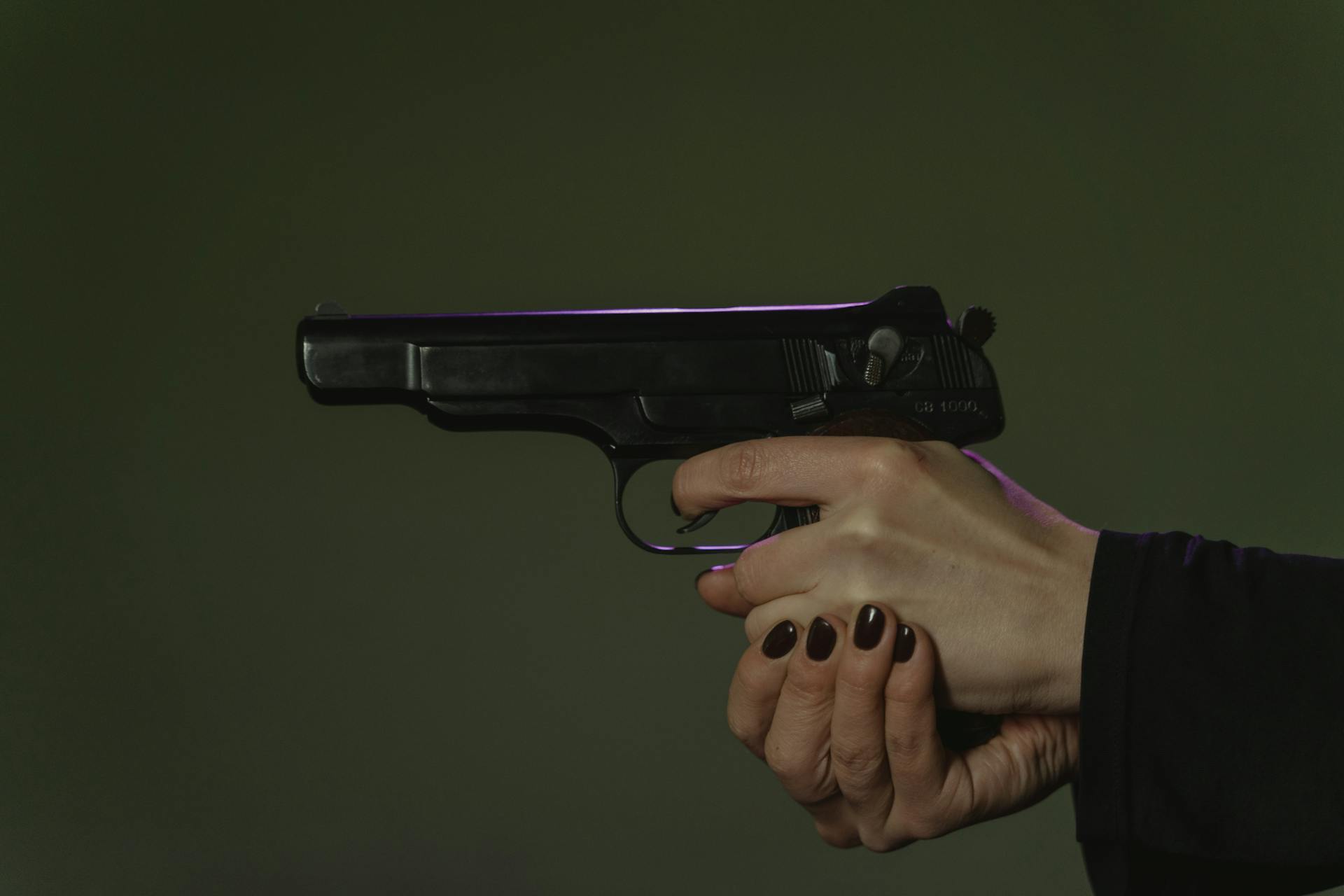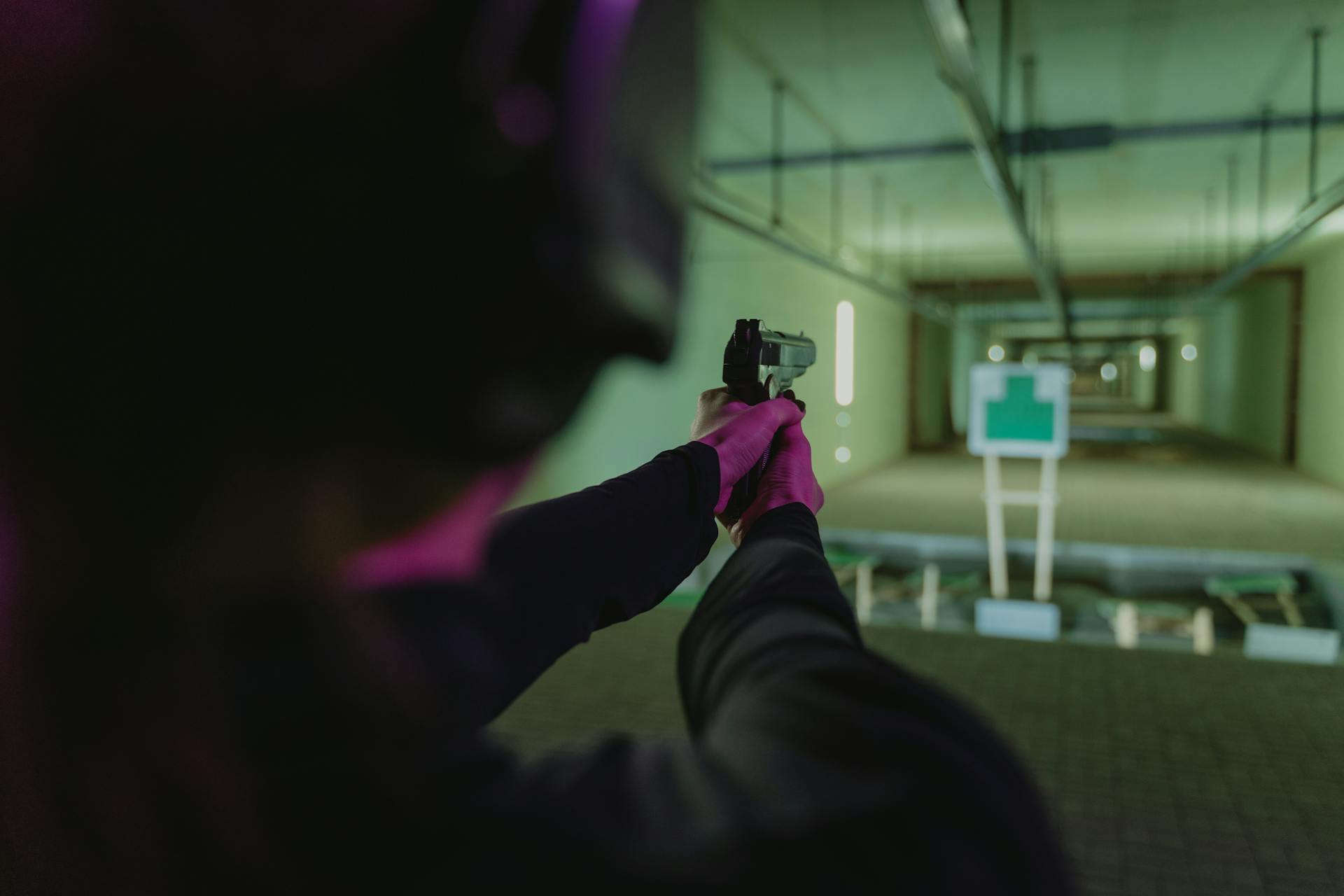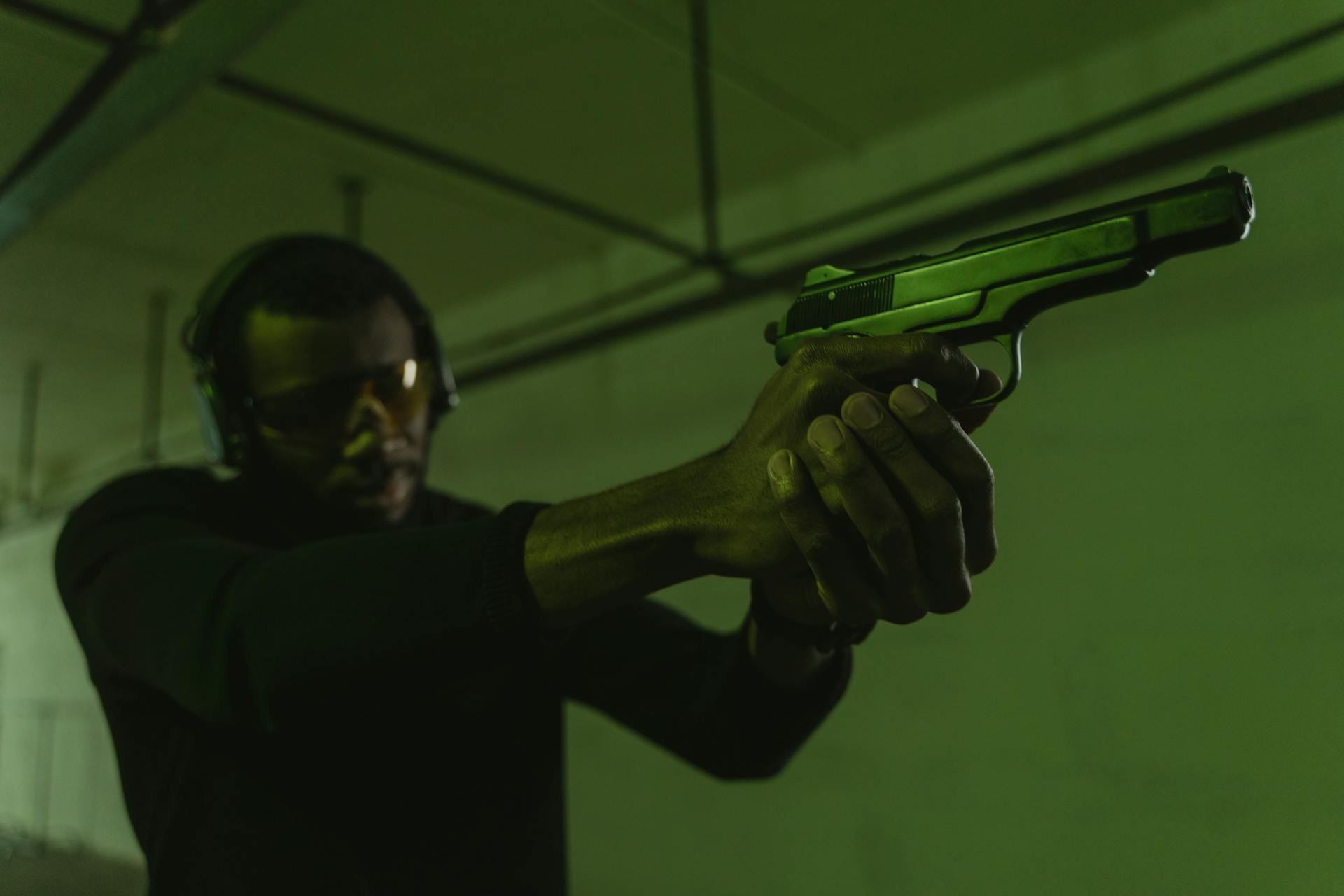Consistent practice with structured drills is the cornerstone of improving any skill, including using a pistol. Whether you’re new to firearms, focusing on competitions, or preparing for home defense, you need to have a playbook of different pistol drills that you can incorporate on a range day to build up your skill.

Fundamentals
Dry Fire
The first handgun training drill for an amateur shooter is learning to master dry-firing your pistol of choice. Ensure your pistol and magazine are both completely unloaded and pointed in a safe direction. Begin with slow, deliberate movements, pulling the trigger back without disturbing the sight alignment. This will help you feel how much effort goes into pulling back the trigger, as well as the distance the trigger needs to move forward to reset. Start with 10-15 minutes a day.
Ball and Dummy
This classic pistol drill reveals flinching habits that destroy accuracy. Load a magazine with a mix of live and dummy rounds (or have a training partner load for you). When you encounter a dummy round, any movement of the pistol reveals your anticipation of recoil. This handgun training drill builds awareness and helps eliminate the flinch response that plagues new shooters.

Dot Torture
Print out targets with various sized dots, with the largest being 2-3 inches in diameter, and practice precision shooting at close range (3-7 yards). Start with the largest dots and make your way progressively to the smaller ones. There’s no time limit on this drill, so really focus on accuracy. This handgun training drill helps you with your trigger control and sight alignment, which makes it perfect for developing accuracy.
Drawing and Presenting
Practice drawing from your holster with emphasis on consistency rather than speed initially. Focus on having the same grip, same draw stroke, and same sight alignment every time. The speed will develop naturally as the motion becomes automatic.
Competitive Shooting Drills
Bill Drill
Fire six rounds as quickly as possible while maintaining acceptable accuracy on a single target. This pistol drill develops rapid fire control and sight tracking. Start slowly and gradually increase speed while maintaining hits in the scoring zone. Advanced shooters can reach sub-2-second times with all hits on target.

5x5 Drill
For this pistol drill, you start with your gun on the table in front of you, or in your holster, to simulate starting from an “unready” position. Then you’ll grab your pistol, get into your shooting stance, aim, disengage the safety, and fire five rounds in five seconds at five yards—with all five shots in the scoring zone.
Mozambique Drill (Failure to Stop)
Fire two shots to the body, followed immediately by one to the head. This pistol drill develops target transitions and shooting under pressure. Competition (and tactical) shooters use this handgun training drill to practice rapid sight acquisition between different aim points while maintaining accuracy. This pistol drill also translates well into real life if you need to put a target down quickly and have it stay down.
Standards Drills
You can look up the FBI Qualification Course online and other standardized tests to provide you with a structured progression of distance, time limits, and round counts. These pistol drills simulate match conditions and help competitive shooters identify weaknesses while under a time constraint.
Home Defense Preparation
Close-Range Accuracy
Most home defense situations occur at very close distances. Practice shooting accurately at 3-7 yards. The 3-yard evaluation pistol drill requires 10 shots in 10 seconds (or less) with all hits in the center scoring zone.
According to the FBI, most home invasions have multiple assailants. Take this drill to the next level by adding multiple targets at close range, and rapidly fire 2 or 3 rounds accurately before quickly transitioning to the next target.
Low-Light Shooting
Home defense situations often occur in poor lighting conditions. Practice shooting with both a handheld flashlight and a weapon-mounted light. Learn to engage targets while properly illuminating both the target and what lies beyond it for safety.
Adding Stress
Add stress to various handgun training drills by doing burpees or running before starting the drill. You really want to get your heart rate high to simulate the stress response of a real-life situation, while still maintaining accuracy and proper weapon safety.
Weapon Familiarization
Function Checks
Get into the habit of going through a constant routine, inspecting your pistol before each pistol drill session. You need to learn how to safely check the barrel for obstructions, ensure the action cycles properly, and that the remaining functions (safety, laser sight, etc.) of your weapon work properly before it’s cleared to use it on your handgun training drills.

Malfunction Clearance
Obtain some dummy rounds to practice clearing common malfunctions like failure to fire, failure to eject, and double feeds. Quick, automatic responses to malfunctions can be critical in both competition and defensive scenarios.
Reloading Drills
Practice both tactical reloads (with rounds remaining in the magazine) and emergency reloads (gun empty). Use a shot timer to track progress, but prioritize smooth, consistent technique over raw speed. A fumbled reload will cost you more time than slightly slower, cleaner reloads. Slow is smooth, smooth is fast.
You can also practice this pistol drill at home. After ensuring both your gun and magazine are completely empty, go through the motion of inserting a magazine and then removing it. Over and over and over. Get used to the feel of which way the magazine faces without having to rely on looking at it. You should be able to have the magazine tossed to you in the dark, and without your sight, be able to insert the magazine properly on the first try.
Building Your Individual Program
Start with consistent practice and slowly progress the difficulty, especially if you’re a beginner. It’s better to be effective with your training, even if the pistol drills feel too basic at first. You need to master the basics, and then slowly increase your speed or the difficulty of the drill. Just keep in mind that quality trumps unfocused quantity. It’s more efficient to spend 15 minutes on deliberate handgun training drills, than it is to spend an hour firing off rounds willy-nilly. Whether your goal is competition success, personal protection, or simply shooting excellence at the range, these pistol drills listed above will help provide the foundation for pistol proficiency.
At Wing Tactical, we have everything you need for your pistol drills—including dummy rounds, trigger finger trainers, magazine pouches, and much, much more. Order today to take your shooting skills to the next level.